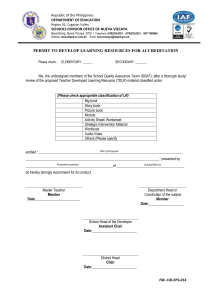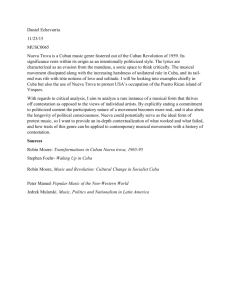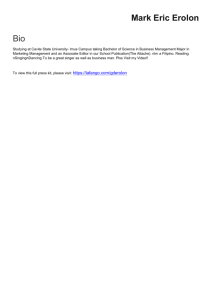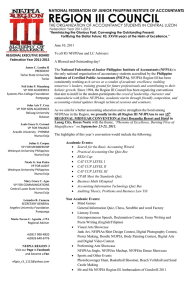Luzon Folk Arts & Designs: Cagayan Valley to Quezon
advertisement
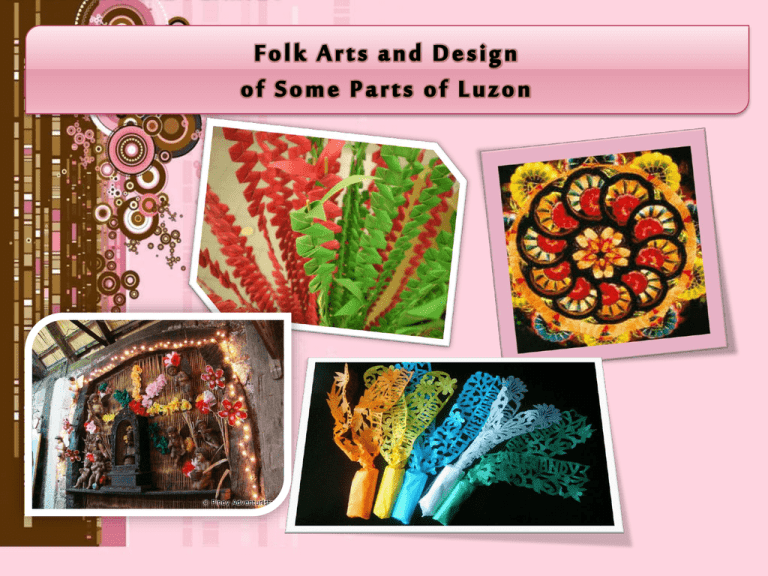
In this lesson, you will understand and know the folk arts and designs from the provinces of Cagayan Valley, Batanes, Nueva Viscaya, Bulacan, Pampanga, Zambales, Nueva Ecija, Bataan, Laguna, Rizal Provinces, Cavite, Batangas, and Quezon. Cagayan Valley is Region II. It is a wide valley in the northeastern part of Luzon and irrigated from the waters of Cagayan River. The valley is believed to be dominated by the elephants and other animals that are already extinct in the Philippines. The Ivatans are the people living in Batanes group of Islands. Most of the Ivatans are farmers and fishermen. The Ivatan women wears ahead gear called vakul. This special clothing is woven from abaca fiber or the vuyavuy palm a plant similar to coconut. The Gaddangs of Nueva Viscaya are known for their crafts and textiles. Nueva Viscaya is located near Ifugao, Benguet and Quirino. Gaddang weavers are known for their bakwat, a belt used by mothers after giving birth. This cloth, unlike of the ikat of the Ifugaos, is usually made of white with beads as accents and patterns of rivers and mountains with bead works on the central portion of the cloth. The Historic town of Bulacan is regarded as the center of anon-making before the coming of Spain. Bulacan Arts and crafts include the singkaban, pastillas wraper, and fire crackers. Singkaban is the local term for bamboo arches elaborately designed with kayas. Pampanga is known for its giant lanterns or parol. Food is an important part of Pampango culture and a source of artistic expression. Nueva Ecija is known for its rice production. In the Tanduyong Festival, the Nueva Ecijanos celebrate thanksgiving for a bountiful harvest each year. Tarlac and Bataan played important roles in shaping the Philippine History and government. Patupat a delicacy from pampanga are also found in the Iba market together with other native delicacies. Zambales is known for its mangoes and other indigenous fruits such as camachile, cashew, and others Folk arts in these provincies resulted from the merging of the traditional belief and Christianity. Laguna is the home of our national hero, Dr. Jose P. Rizal. The Lagunense are proud of their wood carving in paete. Lumban is famous for its Barong Tagalogs that are carefully woven by hands or embroidered to perfection. Other form of folk art in Laguna are kayas and taka. Taka is a peppier mache techniques while kayas is a type of art made by scrapping the softwood thriving in Sierra Madre Mountain and them into beautiful floral and faunal decorations. Angono in Rizal province is the Arts Town of the Philippines. Angono is also known for its Higantes festival, a celebration conceptualized in 1980s by Perdigon Vocalan. In the colonial times, the town folks makes higantes, big peppier Mache of human figures to air their sentiments about the spanish hacienderos. Cavite is the most populous province in the country. From the land of tulisanes during the Spanish time, Cavite is now the haven of foreign investors and for those who are looking for a greener pasture. Cavite is known for its Tinis in Kawit celebrated during Christmas season, the tradition narrates the story how Joseph and Mary found a place to give birth to Jesus. Taal, Batangas is Popular for its embroidered pinya fabric made from the fibers of pineappel. The silky but dilicate fibers of pineapple are woven into a costly fabric for Pinya Barong, Wedding Gowns and other formal attires. Taal is also the Barong Tagalog and Balisong Capital of the Philippines. The town of Lucban in Quezon is famous for its Pahiyas festival every May in honor to San Isidro Labrador the patron saint of the farmers. The festival is not complete without the colorful kiping decors that are made from ground glutinous rice thinly coatedon a special leaves and cooked over a low fire.
